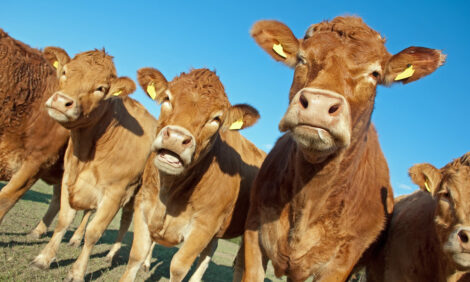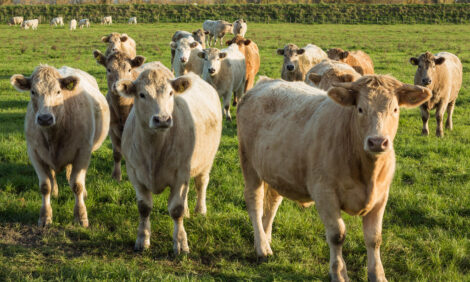



Use Distillers Grains for Livestock Rations
US - The rapid expansion of the ethanol industry has greatly increased the volume of distillers grains available for livestock feed. Nutritionists suggest feeding distillers grains for high protein and fat values, but keep a close eye on sulfur and phosphorous content in the grain."The industry is reporting that 75% to 80% of the distiller coproducts are fed to dairy and beef cattle," says Steve Soderlund, beef nutrition manager for Pioneer Hi-Bred International. "When evaluating the potential value of these products, make sure you request a nutrient profile from the ethanol plant. Consider how these products complement your existing feeding program."
He says one of the biggest factors in determining the nutrient content of the distiller coproducts is the grain source used by the ethanol plant. "In comparison to corn, if the plant is using sorghum as a primary grain source, expect to see higher protein levels, but a lower fat level," says Soderlund.
Feeding distillers grains
University beef cattle feeding trials have found the energy values of distillers grain can be as much as 9% better than corn. This is due primarily to the fat content in the product which is 2.25 to 2.5 times the caloric density of starch. Most distillers grains contain between 10% to 12% fat and 24% to 30% protein."Including distillers grains at 15% to 20% of the dry matter in a beef finishing ration generally will meet the protein requirements and contribute to the energy needs of the cattle," he says. "In forage-based diets for beef cows, distillers grains can be used as a source of supplemental protein and energy. The amount fed depends on the desired performance and nutrient content of the forage."
Be aware of two potential mineral concerns, sulfur and phosphorus, when feeding distillers grains to feedlot cattle. Keep sulfur content to less than 0.4% of the dry matter intake from all sources, including water. Polioencephlemalacia - a disease affecting the central nervous system of cattle - can result from elevated sulfur levels. In addition, phosphorous levels should be monitored.
Source: Ohio Farmer


